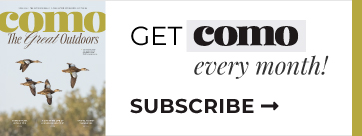Eight Ways to Make Meetings More Effective

One of the things that kills workplace culture efforts is ineffective meetings. It’s a myth that employees hate meetings. They just hate useless, purposeless, boring meetings.
The reality is that most meetings are dull and ineffective. People like to feel productive, and most meetings kill productivity faster than sunshine melts a snowball.
Considering the high percentage of people who view meetings as useless and boring, you have the opportunity to improve your organizational climate by making your meetings more dynamic. These eight ideas for effective meetings can make a dramatic improvement in planning, experience, and outcomes.
Have a clear purpose for the meeting.
Leaders often make the mistake of trying to mix in components of what should be multiple meetings into one meeting. Facilitators may mix in some project discussion, a company update, and some training or development into a single meeting. The result is that the team only retains their favorite parts of the meeting, or they’re just confused. What you should be having is an effective meeting focused on achieving a single objective. Enhance your meeting by committing to a singular purpose, whether it is educational, informational, or planning-oriented.
Carefully budget the time needed for the meeting.
Sometimes managers will book a time for a meeting without considering how long the meeting will be. It’s over when it’s over, right? Wrong. When you set time limits and deadlines, it brings focus to what you are doing. (Keep in mind that 90 minutes is about as long as participants can sit without a break.) Having a set time frame will build your facilitation skills as you challenge yourself to conduct the meeting, cover everything with participation, and close it strong within the timeframe you set. Remember, meetings are like purses: Whatever size you buy, you will fill it up.
Have a strong opening.
Depending on the purpose of the meeting, have a strong opening planned. It might be a quote, a video, or a client testimonial. Make sure your opening matches the purpose and outcome of the discussion.
Have an agenda distributed prior to the meeting.
Make sure you lay out the agenda for the meeting according to its purpose and the time you’ve allotted. Putting out the agenda beforehand communicates to everyone why you’re getting together and what will happen. This kills the anxiety people may have about not knowing the purpose of the meeting, and it will give them time to prepare. This helps your meeting become more efficient — participants don’t have to process as much information on the fly.
Don’t be afraid of conflict.
Some leaders may not want to distribute the agenda in advance because they’re afraid of conflict. Some may not want to address issues in a meeting for the same reason. This is a leadership sin. Conflict is good among teams. Well-facilitated discussion brings better conversation, better ideas, and better relationships. That’s exactly what a meeting should be, so don’t shy away from it.
Document who is accountable.
Do not end the meeting without reviewing who is doing what and when. If this is simply an informational meeting in which you are debriefing your troops, this step may not be necessary, but in project meetings, training meetings, and development meetings, you need to follow this process.
Have a powerful closing.
Put some thought into how you’re going to close the meeting. You need to vary your closing depending on the purpose of the meeting. Again, you can use a quote, a video or an affirmation to someone on the team. One move I particularly like is telling all participants that they must shake hands with one another after the meeting. You can vary this as your company culture allows.
Distribute notes from the meeting.
Make sure that someone is taking notes during the meeting that match the agenda. It’s hard to take notes and facilitate, so you may need to designate someone else to do this. At the end of the meeting, simply take the original agenda and the notes for each item, along with who is doing what by when, and send it out to everyone in attendance.
Tony Richards is an organizational and executive development expert and CEO of Clear Vision Development Group, a leadership and strategy firm in Columbia, Missouri. He is one of Inc. magazine’s top 100 leadership speakers and thinkers. His firm’s website is www.clearvisiondevelopment.com. Follow Tony on Twitter @tonyrichards4.


